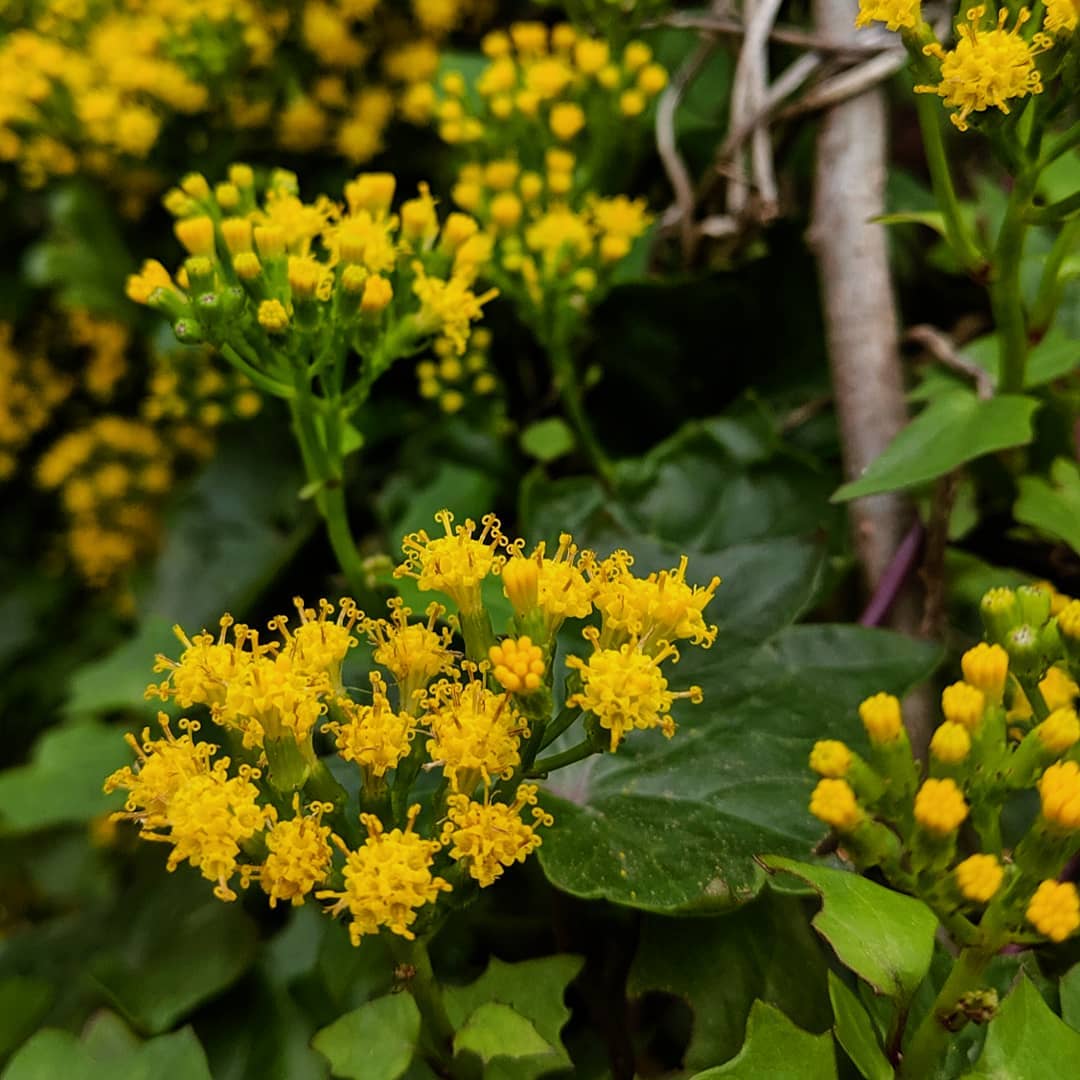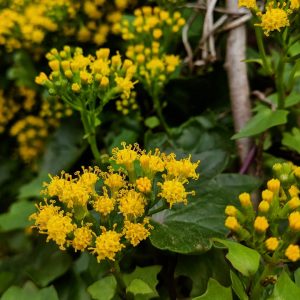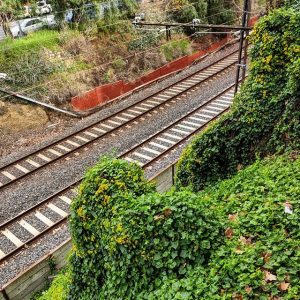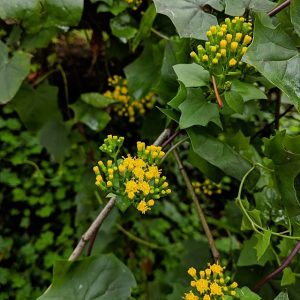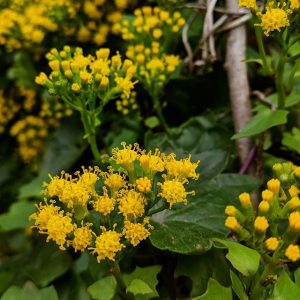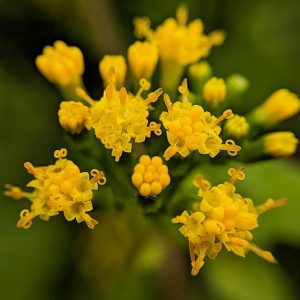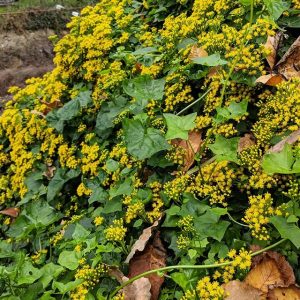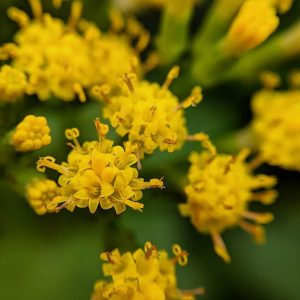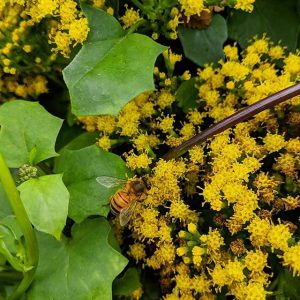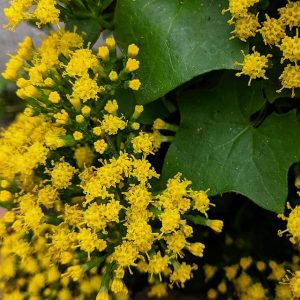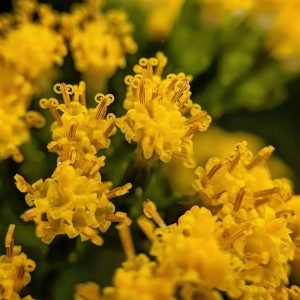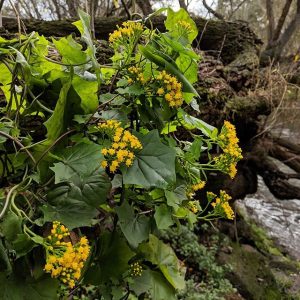Cape Ivy (Delairea odorata), a sickly sweet smelling smotherer of fencelines, coastal dunes and riparian understoreys.
An environmental weed known elsewhere as Ivy-leaved Groundsel, this Southern African aster was previously placed in Senecio but now occupies its own genus. Cape Ivy was presumably among unnamed Senecio species and cultivars listed in early nursery catalogues at Melbourne and Geelong, but would also have been traded informally as a dunny vine easily grown from seed or cuttings in moist conditions.
There is an 1852 letter to the Geelong Advertiser and Intelligencer, describing the fencing of properties at Newtown, the loss of a common terrain of trees and drainages, and the failure of the local government to spend on infrastructure and social capital. In that letter, the writer observes that ‘slight indeed is the trace where the waters of centuries have rolled. The great stumps, over which the little boys played ‘leap-frog’, are either gone or covered with the Cape ivy.’
That is the first reference that I have available of the species growing as a weed in Australia. An 1856 column in the SMH inventories Cape Ivy on the dunes at Newcastle NSW, and an 1864 column in the same notes the plant as growing wild in that colony. The first digitised botanical collection of Delairea odorata was made in 1880 on dunes near Gulaga (fmr Mount Dromedary) in southern NSW; it would then be collected in 1884 in Studley Park here in Melbourne.
Other species in Senecio have been referred to as Cape Ivy, however these appear to have only naturalised in Australia in the twentieth century. A 1909 column in the NSW Manilla Express promotes the use of a ‘Cape Ivy’ that is clearly a species of Senecio with ray florets. A June 1917 note in the Brisbane Courier observes that a ‘Cape Ivy’ had enjoyed popularity on the east coast following the Boer War, ‘brought from Cape Town by members of contingents returning … [and] being planted widely all over Queensland’; identified as ‘Senecio latifolius’, a later note corrected that ‘Cape Ivy’ to S. tamoides, first collected in NSW around that time.
View Original Post on Instagram
Search for information about Delairea odorata in the Flora of Victoria
View information and occurrences of Delairea odorata on the Atlas of Living Australia
